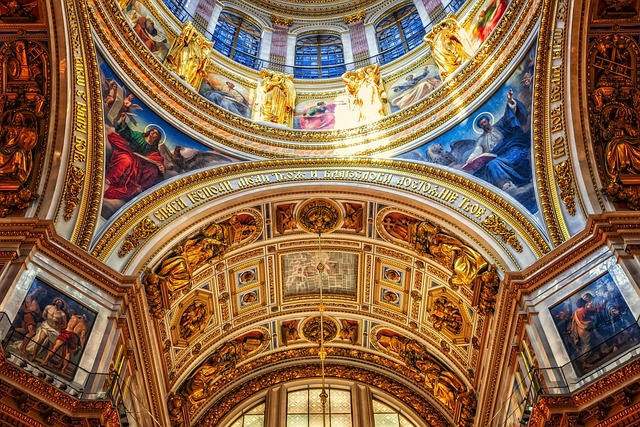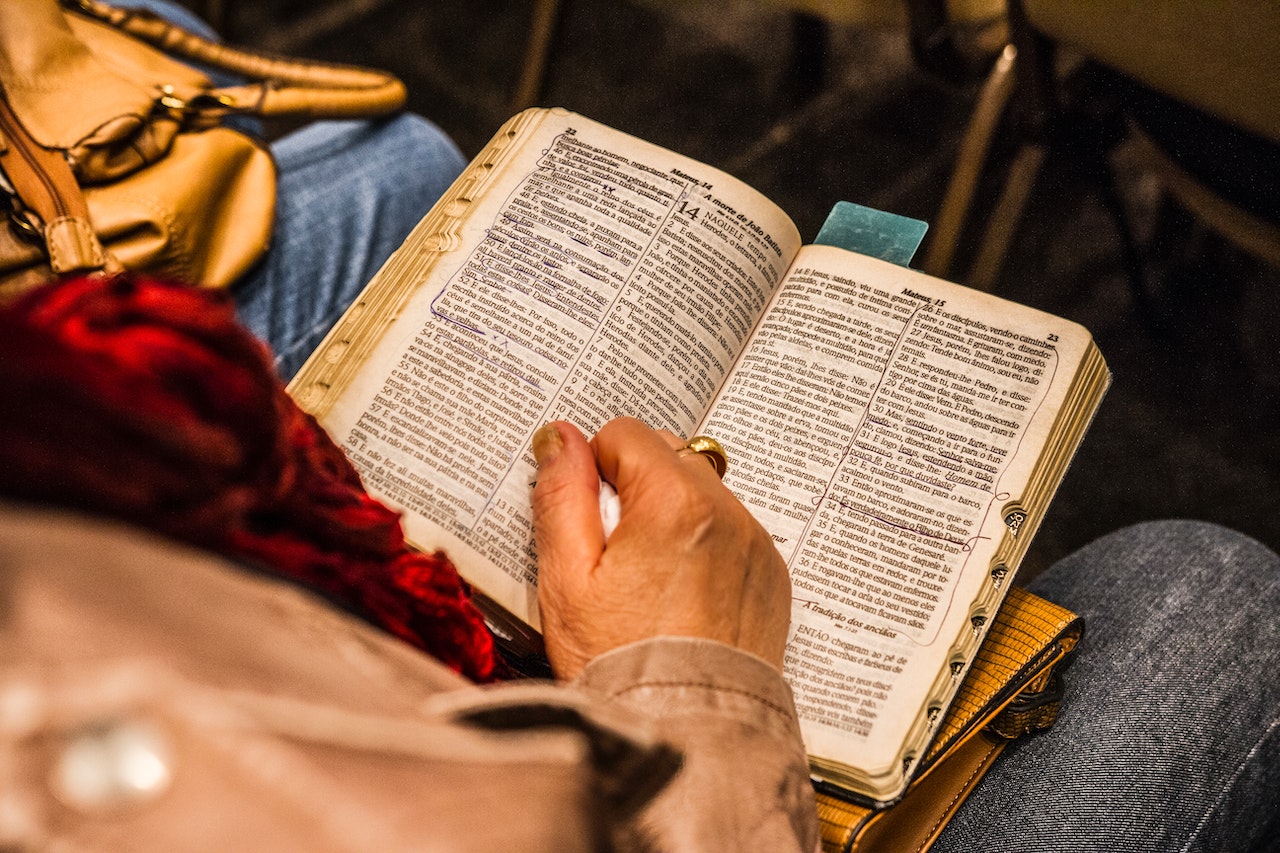Orthodox Christianity and Catholicism are two major branches of Christianity that have evolved over centuries. While they share many similarities in terms of beliefs and practices, there are also significant differences between the two. This introduction aims to provide a brief overview of the key distinctions between Orthodox and Catholic Christianity.
Table of Contents
History and Origins of Orthodox and Catholic Churches
The history and origins of the Orthodox and Catholic churches are fascinating and intertwined. Both churches trace their roots back to the early days of Christianity, but over time, they developed distinct traditions and practices. Understanding the history of these two branches of Christianity can shed light on their similarities and differences.
The Orthodox Church can trace its origins back to the apostles themselves. It was in the first century AD that the apostles spread the teachings of Jesus Christ throughout the Roman Empire. The early Christian communities were united in their beliefs and practices, but as the Roman Empire grew, so did the challenges faced by the Church.
In the fourth century AD, the Roman Empire adopted Christianity as its official religion under Emperor Constantine. This led to the establishment of the Catholic Church as the dominant religious institution in the West. However, in the East, the Church continued to develop independently, eventually becoming what is now known as the Orthodox Church.
The Great Schism of 1054 marked a significant turning point in the history of these two churches. The schism was the result of a long-standing theological and cultural divide between the East and the West. The primary issue was the authority of the Pope, with the Orthodox Church rejecting the Pope’s claim to universal jurisdiction.
Despite the schism, both churches continued to evolve and grow. The Catholic Church became the dominant religious institution in Europe, while the Orthodox Church spread throughout the Byzantine Empire and beyond. Each church developed its own distinct liturgical traditions, theological teachings, and ecclesiastical structures.
One of the key differences between the Orthodox and Catholic churches is the concept of papal infallibility. In the Catholic Church, the Pope is considered to be infallible when speaking ex cathedra on matters of faith and morals. This means that his teachings are considered to be without error. In contrast, the Orthodox Church does not recognize the Pope’s infallibility and instead places a greater emphasis on the collective authority of the bishops.
Another difference lies in the liturgical practices of the two churches. The Catholic Church follows the Latin Rite, which is characterized by the use of Latin in the liturgy and the celebration of the Mass. On the other hand, the Orthodox Church follows various liturgical traditions, including the Byzantine Rite, which is characterized by its use of Greek and other Eastern languages.
Despite these differences, the Orthodox and Catholic churches share many common beliefs and practices. Both churches believe in the Holy Trinity, the divinity of Jesus Christ, and the importance of the sacraments. They also share a commitment to the teachings of the early Church fathers and the authority of the ecumenical councils.
In conclusion, the history and origins of the Orthodox and Catholic churches are deeply intertwined. Both churches can trace their roots back to the early days of Christianity, but over time, they developed distinct traditions and practices. Understanding the history of these two branches of Christianity can help us appreciate their similarities and differences, and foster a greater sense of unity among all Christians.
Differences in Doctrine and Beliefs between Orthodox and Catholic Churches

Orthodox Vs Catholic: Differences in Doctrine and Beliefs between Orthodox and Catholic Churches
When it comes to Christianity, there are various denominations that have their own unique beliefs and practices. Two of the most prominent branches are the Orthodox and Catholic Churches. While they share a common foundation in Christianity, there are significant differences in their doctrine and beliefs that set them apart.
One of the key distinctions between the Orthodox and Catholic Churches lies in their understanding of the Holy Trinity. Both believe in the Father, Son, and Holy Spirit, but the Orthodox Church emphasizes the unity of the Trinity, while the Catholic Church focuses on the distinction of the three persons. This difference in emphasis can be seen in their liturgical practices, where the Orthodox Church places a greater emphasis on the mystery and transcendence of God, while the Catholic Church emphasizes the personal relationship with God.
Another area of divergence is the role of the Pope. In the Catholic Church, the Pope is considered the head of the Church and has the authority to make infallible statements on matters of faith and morals. On the other hand, the Orthodox Church does not recognize the Pope as having universal jurisdiction or infallibility. Instead, they believe in the collective authority of the bishops, with no single bishop having supreme authority over the others.
The issue of original sin is also approached differently by the Orthodox and Catholic Churches. The Catholic Church teaches that all humans inherit the guilt of Adam and Eve’s sin, and baptism is necessary for the forgiveness of this original sin. In contrast, the Orthodox Church believes that while humans inherit the consequences of Adam and Eve’s sin, they are not guilty of it. Baptism in the Orthodox Church is seen as a means of purification and initiation into the Church rather than the forgiveness of original sin.
The veneration of saints is another area where the Orthodox and Catholic Churches differ. Both churches honor and seek the intercession of saints, but the Orthodox Church places a greater emphasis on the veneration of icons. Icons are considered windows to the divine and are used as aids in prayer and worship. The Catholic Church also venerates icons, but the practice is not as central to their worship as it is in the Orthodox tradition.
The issue of divorce and remarriage is another point of contention between the two churches. The Catholic Church holds a strict stance on divorce, considering marriage to be indissoluble. However, the Orthodox Church allows for divorce under certain circumstances and permits remarriage. This difference in approach reflects the different understandings of marriage and the sacraments in each tradition.
Despite these differences, it is important to note that both the Orthodox and Catholic Churches share a common faith in Jesus Christ and the teachings of the early Church. They both celebrate the sacraments, believe in the resurrection, and strive to live a life of holiness. While their practices and beliefs may vary, they are united in their commitment to Christ and the spreading of the Gospel.
In conclusion, the Orthodox and Catholic Churches have distinct differences in their doctrine and beliefs. From their understanding of the Holy Trinity to the role of the Pope, the approach to original sin, the veneration of saints, and the stance on divorce and remarriage, these differences shape the unique identities of each tradition. However, it is important to remember that despite these divergences, both churches are united in their love for Christ and their desire to follow His teachings.
Liturgical Practices and Rituals in Orthodox and Catholic Churches
When it comes to liturgical practices and rituals, the Orthodox and Catholic churches have many similarities, but also some key differences. Both churches place a strong emphasis on the sacraments and the Eucharist, but the way these are celebrated can vary.
In the Orthodox Church, the liturgy is often seen as a mystical and transcendent experience. The rituals are highly structured and follow a set order, with little room for variation. The priests wear ornate vestments and the use of incense is common. The congregation stands for most of the service, and there is a sense of reverence and awe throughout.
In contrast, the Catholic Church has a more flexible approach to liturgy. While there is a general structure that is followed, there is also room for adaptation and variation. The priests may wear simpler vestments, and the use of incense is not as common. The congregation may sit or kneel during certain parts of the service, and there is a balance between reverence and a more relaxed atmosphere.
One of the key differences between the two churches is the language used in the liturgy. In the Orthodox Church, the liturgy is typically conducted in the local language, allowing the congregation to fully understand and participate in the service. In the Catholic Church, Latin was traditionally used, but in recent years there has been a shift towards using the local language as well. This change has made the liturgy more accessible to the congregation and has helped to foster a greater sense of community.
Another difference is the role of icons in worship. In the Orthodox Church, icons are considered to be windows into the divine and are venerated as sacred objects. They are often placed in prominent positions within the church and are used as aids to prayer and meditation. In the Catholic Church, while icons are still used, they do not hold the same level of importance. The focus is more on the Eucharist and the sacraments as the central acts of worship.
The music used in the liturgy is also different between the two churches. In the Orthodox Church, the music is often chanted or sung a cappella, with a strong emphasis on harmony and melody. The congregation may join in the singing, but it is primarily led by a choir. In the Catholic Church, there is a wider range of musical styles, from traditional hymns to contemporary worship songs. The congregation is encouraged to participate in the singing, creating a more interactive and engaging worship experience.
Despite these differences, both the Orthodox and Catholic churches share a common goal of worshiping and glorifying God. The liturgical practices and rituals may vary, but the underlying faith and devotion are the same. Whether one chooses to attend an Orthodox or Catholic service, they can expect to encounter a rich and meaningful worship experience that connects them to the divine.
In conclusion, the liturgical practices and rituals in the Orthodox and Catholic churches have both similarities and differences. The Orthodox Church emphasizes a structured and mystical experience, while the Catholic Church allows for more flexibility and adaptation. Language, icons, and music also play a role in shaping the worship experience. However, at the core, both churches share a deep commitment to worshiping God and fostering a sense of community.
Ecumenical Movements and Efforts between Orthodox and Catholic Churches
Orthodox Vs Catholic: Ecumenical Movements and Efforts between Orthodox and Catholic Churches
When it comes to Christianity, two major branches dominate the religious landscape: Orthodox and Catholic. While they share many similarities, there are also significant differences that have historically led to divisions between the two. However, in recent years, there have been increasing efforts towards ecumenism, aiming to bridge the gap and foster unity between Orthodox and Catholic churches.
One of the main obstacles to unity between Orthodox and Catholic churches is the issue of papal authority. Catholics recognize the Pope as the head of the Church, while Orthodox Christians believe in a more decentralized structure, with each local church having its own autonomy. This difference in governance has been a point of contention for centuries, but in recent years, there have been dialogues and discussions aimed at finding common ground.
Another area of difference is the understanding of the Holy Spirit. Catholics believe in the procession of the Holy Spirit from both the Father and the Son, while Orthodox Christians believe in the procession of the Holy Spirit from the Father alone. This theological difference has been a source of division, but there have been efforts to engage in theological dialogue and find a shared understanding.
Despite these differences, there have been significant ecumenical movements and efforts between Orthodox and Catholic churches. One notable example is the Joint International Commission for Theological Dialogue between the Catholic Church and the Orthodox Church. This commission, established in 1979, has been working towards resolving theological differences and promoting unity between the two branches of Christianity.
In addition to official dialogues, there have also been grassroots initiatives aimed at fostering unity between Orthodox and Catholic communities. Interfaith prayer services, joint charitable projects, and cultural exchanges have all played a role in bringing people from both traditions together. These efforts have helped to build relationships and promote understanding between Orthodox and Catholic Christians.
One significant milestone in the ecumenical movement between Orthodox and Catholic churches was the meeting between Pope Francis and Patriarch Kirill of Moscow in 2016. This historic meeting marked the first time a Pope and a Russian Orthodox Patriarch had met in over a thousand years. The meeting resulted in a joint declaration, highlighting areas of common concern and expressing a commitment to work towards unity.
While progress has been made, there are still challenges to overcome in the journey towards unity between Orthodox and Catholic churches. Theological differences, cultural barriers, and historical grievances continue to pose obstacles. However, the ecumenical efforts and dialogues that have taken place in recent years provide hope for a future of greater unity and understanding.
In conclusion, the relationship between Orthodox and Catholic churches has been marked by both division and efforts towards unity. While there are significant theological differences that have historically led to divisions, there have been increasing ecumenical movements and efforts aimed at bridging the gap. Through official dialogues, grassroots initiatives, and historic meetings, Orthodox and Catholic Christians are working towards a future of greater unity and understanding. While challenges remain, the progress made so far provides hope for a more united Christian community.
Conclusion
In conclusion, the Orthodox and Catholic branches of Christianity have several similarities and differences. Both share a belief in the Holy Trinity, sacraments, and the importance of the Church. However, they differ in terms of church structure, liturgical practices, and theological interpretations. The Orthodox Church places a greater emphasis on mysticism and theosis, while the Catholic Church emphasizes the authority of the Pope and the concept of purgatory. Despite these differences, both branches have rich traditions and continue to play significant roles in the spiritual lives of their followers.
For licensing reasons, we must provide the following notice: This content was created in part with the help of an AI.


